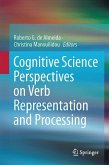The Nature of Language addresses one of the most fundamental questions of mankind: how did language evolve, and what are the neurobiological and cognitive foundations of language processing? These questions are explored from different perspectives to discuss the building blocks of language evolution and how they developed in the way they can be found in modern humans. Primarily, neural mapping methods of cognition presented in this research provide extremely valuable data about the neural circuitries that are involved in language processing. Thus, the book explores and illustrates cortical mapping in typical language patterns, but also cortical mapping in atypical populations that fail to process particular language aspects. A neurobiological stance is used to inquire about how language abilities of our species evolved to communicate for the purposes of conveying information such as ideas, emotions, goals, and humor.The evolutionary language model presented builds on the cognitive abilities of our ancestors, and it allows readers to draw a variety of expansive conclusions from that, including the idea that human language as an interface system provides the basis for consciousness.
Bitte wählen Sie Ihr Anliegen aus.
Rechnungen
Retourenschein anfordern
Bestellstatus
Storno








